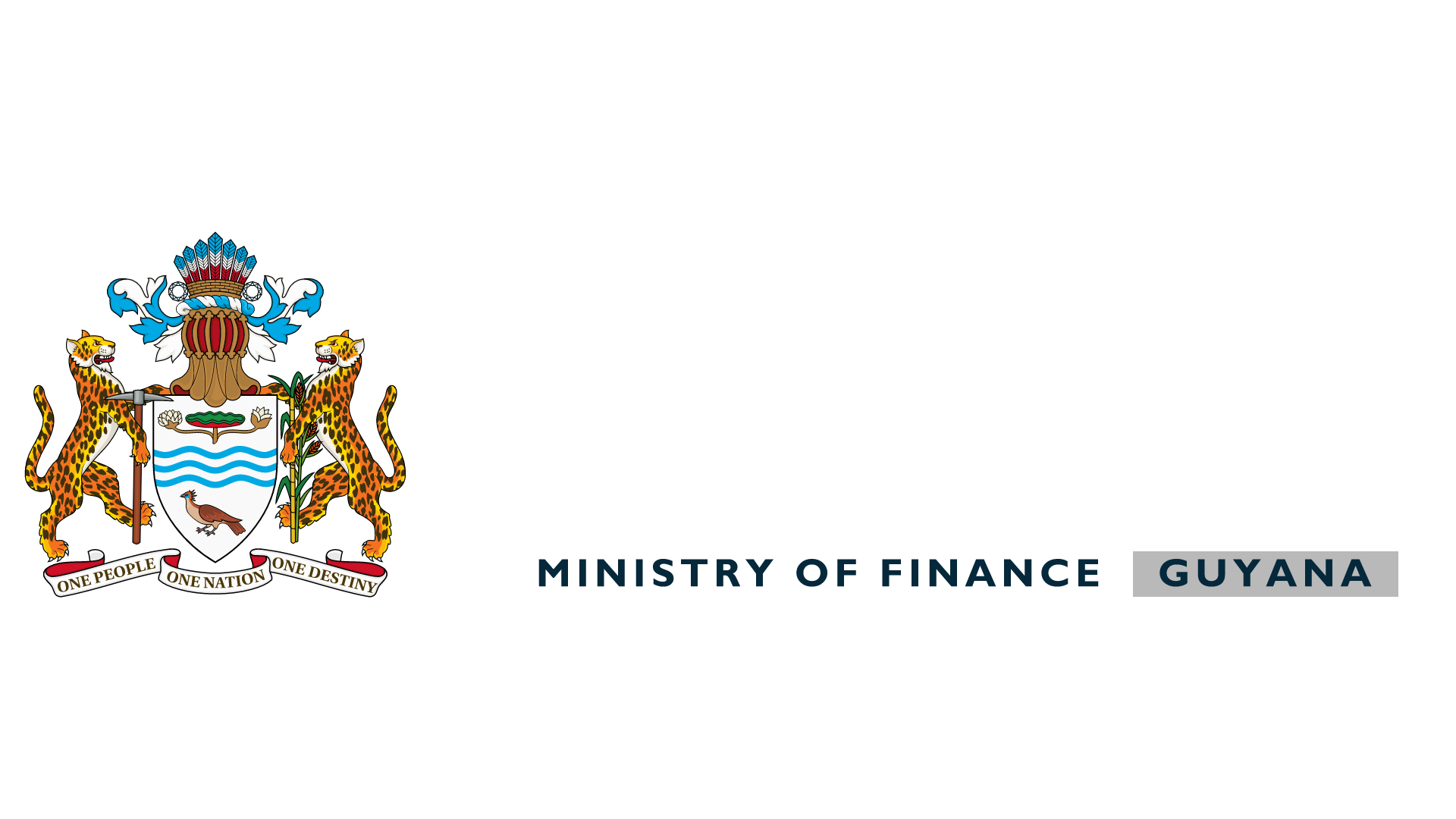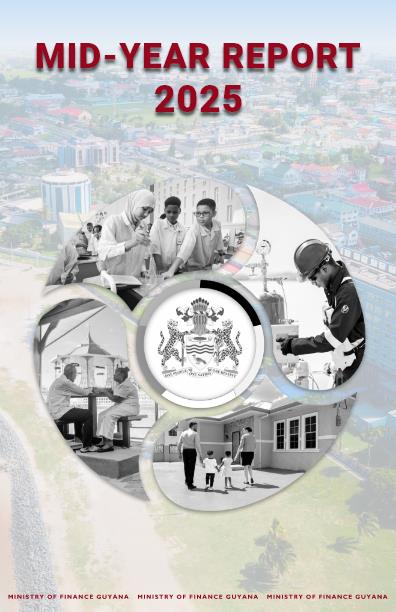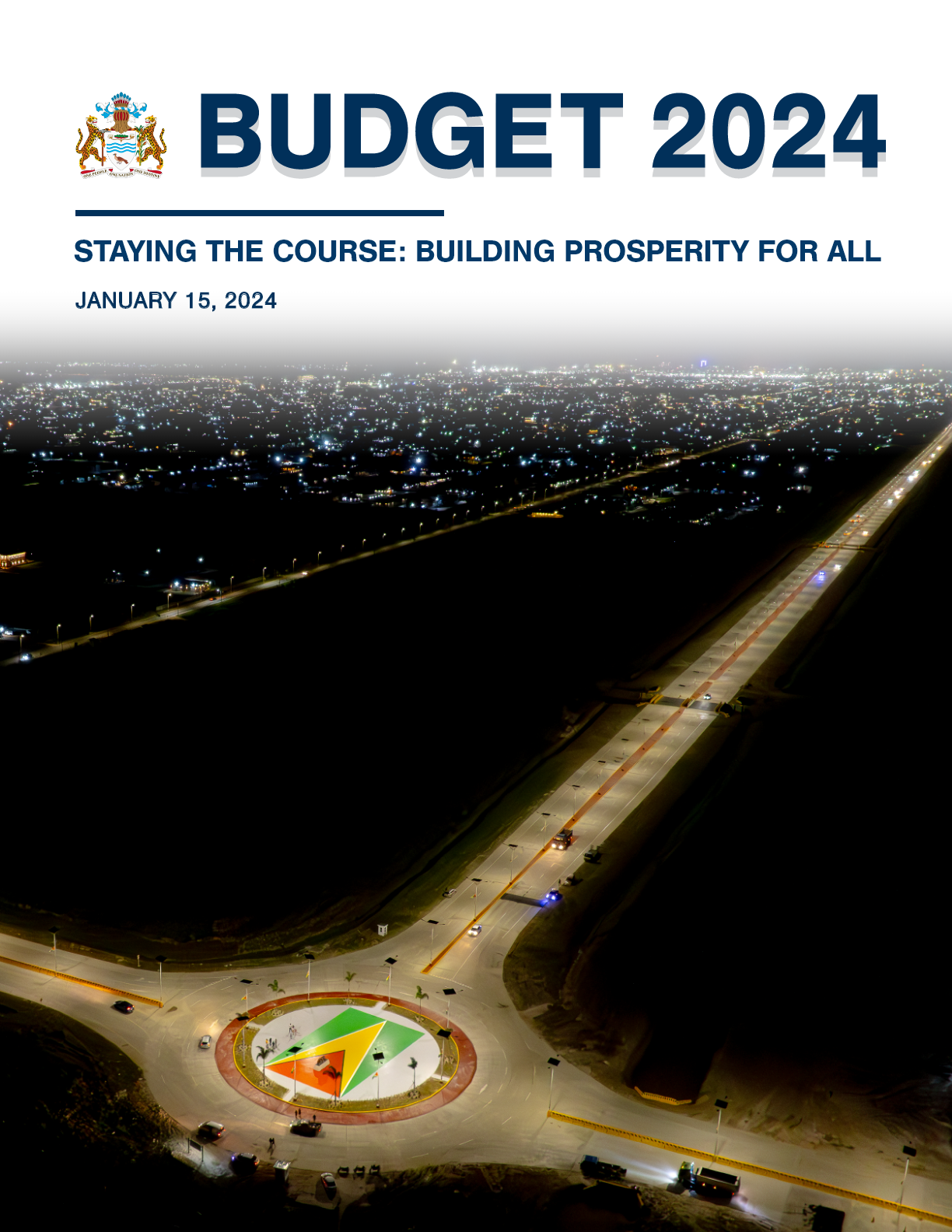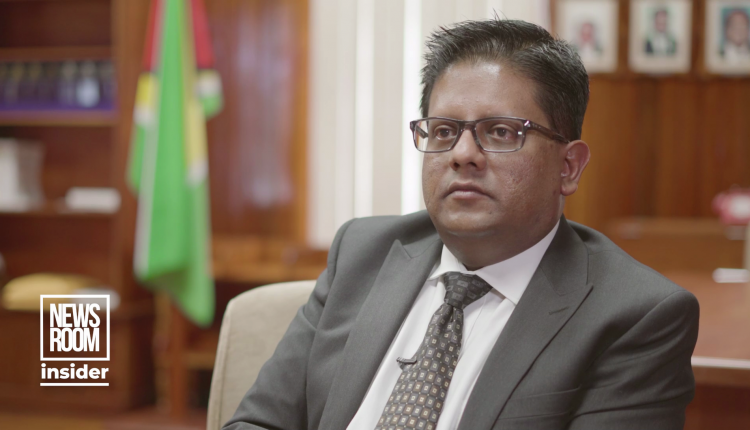GoG Student Loan Write Off Programme (Phase 1)
Electronic Submission
Apply Online
Physical Submission
Eligibility Criteria and Steps to Apply
Student Loan Write Off Application Form
Guyana implemented a suite of measures to contain rising prices amid external shocks
-one of the Caribbean countries which contained inflation to single digits-lower than many countries in the world
Georgetown, Ministry of Finance, January 7, 2023: As the global economy confronts high levels of inflation, the economies of the Caribbean, including Guyana, have recorded low inflation rates due to direct action to keep prices from rising. In its December 2022 quarterly issue of its ‘Caribbean Economics’ publication, the Inter-American Development Bank (IDB) has listed some of the measures taken by Guyana and other Caribbean Governments to stem inflation and assist their economies to grow despite external shocks and higher commodity prices on the world market. Some of the challenges these countries faced and alluded to in the report were the War in Ukraine, higher oil prices which resulted in higher fuel prices and of course, the Covid-19 recovery period. “Just as Caribbean economies are emerging from the sharp recessions associated with the COVID-19 pandemic, a confluence of external shocks now complicates the recovery…the current global context of high commodity prices affects countries differently, depending on whether they are mainly commodity importers or exporters”, the IDB stated.
As the People’s Progressive Party/Civic (PPP/C) continues to confront the challenges posed by global events, including supply chain disruption, the Russian invasion of Ukraine and the lingering COVID-19 pandemic, a suite of measures were implemented to ease the cost of living and contain the rising prices.
The report noted that in addition to the Guyana Government’s interventions to absorb the increased costs on commodities such as fuel (as a result of higher prices on the world market) by reducing Excise Tax on fuel from 20 to 10 percent in January, 2022 and then to zero in March of the same year as well as absorbing the additional operating costs on electricity and water tariffs, the IDB noted that the Government also intervened by allocating US$4.8 million for the purchase and distribution of fertilizer to farmers to reduce operating costs, distributing US$ 3.8 million in the form of one-time cash grants for households in the rural interior and riverain communities (US$120 per household) and through its public assistance payments to vulnerable populations by increasing these payments from US$57 to US$67 per person per month, benefitting approximately 18,000 people. ‘The payments were later expanded to provide lifelong support for people with permanent disabilities’, the report added. It also referenced the Old Age Pension which ‘benefitted approximately 65,000 senior citizens and which saw a series of increases that brought it from a monthly payment of US$98 in 2020 to US$134 in 2022’.
The IDB report went on to note that ‘price shocks have also inspired regional leaders to promote longer-term regional solutions to the dependence on imports from outside the region and also alluded to CARICOM’s 25 by 2025 Initiative (led by Guyana’s President under his portfolio responsibility in CARICOM) which has the aim to reduce food import dependence by 25 percent by 2025 adding that this promising objective could be achieved through a combination of increased domestic production and enhanced regional trade. It then used an example of such as the notable regional collaboration of ‘the Saint Barnabas accord signed by the governments of Barbados and Guyana in July 2022.
The Government of Guyana continues to proactively monitor, review and put into action, measures to ease the burden on its most vulnerable citizens.
Government signs loan agreement with Bank of China for advancement of construction of historic New Demerara River Bridge
-Finance Minister announces
Georgetown, Ministry of Finance, December 30, 2022: In tandem with Government’s aggressive and transformative transport infrastructure plans for the country, Senior Minister in the Office of the President with Responsibility for Finance Dr. Ashni Singh today announced that Government had today completed the electronic signing of the loan agreement with the Bank of China for 160.8 Million Euros for the advancement of the construction of the New Demerara River Bridge. It can be recalled that in May this year, Government signed the US$260M contract for the major new Bridge as part of its plans to expand and modernize Guyana’s transport infrastructure, and significantly reduce the traffic woes on the East Bank of Demerara. The project, which has been long in the making by the PPP/C Administration, was awarded to the Joint Venture of China Railway Construction Corporation (International) Limited, China Railway Construction (Caribbean) Co., Ltd & China Railway Construction Bridge Engineering Bureau Group Co., Ltd.
The hybrid designed bridge will feature a modern four-lane structure (two carriageways), cycle lane, with a 2.65 kilometers length, driving surface of about 23.6 meters or 77.8 feet and will have a lifespan of some 100 years. The Demerara Harbour Bridge is also a vital linkage for the transport of agricultural goods from Regions 2 and 3 into Regions 4 and beyond. Therefore, easier and more efficient transport links will support agricultural development and food security for Guyanese.
The current Demerara Harbour Bridge is over 40 years old and connects the East Bank at Peters Hall with the West Bank at MeerZorgen, an estimate of 40,000 to 45,000 people and over 20,000 vehicles each day (11,000 per direction).
The new Demerara Harbour Bridge is a critical component of the Government’s drive to expand and modernize Guyana’s transport infrastructure and will address the challenges faced by users of the current bridge by providing safe, efficient, and effective crossing. It will offer easy connectivity to both the existing East Bank Demerara road as well as the new Diamond to Eccles bypass, the existing West Bank Demerara road, and the new Parika to Schoonord road. The new bridge will transform the face of transportation between Regions 3 and 4 and further regions. The new high span, four lane bridge will facilitate the smooth flow of traffic without congestion and delays.
The bridge is also a key strategic investment as economic activity on both sides of the Demerara expands rapidly, with developments on the horizon, such as new and expanded shore bases, a massive gas-to-power project and other industrial activities, alongside growth in more traditional sectors such as housing, construction, and services such as tourism. The bridge will play a significant role in accommodating and propelling economic growth.
Guyana’s overall real GDP grew by 36.4% in the first half of the year, with non-oil growth of 8.3% – according to the Mid-Year Report 2022
Georgetown, Ministry of Finance, September 3, 2022: According to the Ministry of Finance’s recently released Mid-Year Report 2022, Guyana recorded an overall real Gross Domestic Product (GDP) growth of 36.4 percent in the first half of the year, with the non-oil economy growing by 8.3 percent, reflecting Government’s supportive policy stance. The outlook for the second half continues to be favourable. For the full year, real GDP growth in 2022 is now projected at 56 percent overall, and non-oil GDP growth at 9.6 percent, maintaining Guyana’s position of global leader in economic growth.
“Led by President Ali and fueled by the rapid economic growth, we have embarked on a period of rapid transformation, and our Government has laid out a masterplan for the rapid development and transformation of Guyana. More importantly, we have demonstrated the capacity and commitment to working assiduously to make this vision a reality so that benefits can redound to citizens in the shortest possible time,” Dr. Singh had indicated.
Senior Finance Minister Dr. Ashni Singh had noted that upon the assumption to office by the President Irfaan Ali-led Government, the administration recognised the importance of a strong, diversified economic base and, as such, even in the early days of oil production, placed the highest level of importance on a resilient non-oil economy. The aim, therefore, was to modernise the economy’s traditional pillars and catalyze ‘a rapidly growing and highly competitive non-oil economy. This is evident in the nation’s non-oil economic growth at the end of the first half. The continued growth projected for 2022 builds on the 4.6 percent growth recorded last year.
The key macroeconomic highlights are as follows:
SECTORAL PERFORMANCE
Agriculture, Forestry and Fishing
The agriculture, forestry and fishing sector is estimated to have expanded by 10.9 percent in the first six months of 2022, driven by higher output from the other crops, forestry and livestock, notwithstanding weaker performances in the sugar, rice and fishing industries. The sector is now expected to grow by 11.9 percent.
Extractive Industries
The mining and quarrying sector is estimated to have grown by 64.6 percent in the first half of the year, with a revised 2022 forecast of 99.9 percent driven by growth in the petroleum and other mining industries.
The petroleum sector expanded by an estimated 73.5 percent, with 34.6 million barrels of oil produced in the first half of the year. This was the result of the commencement of oil production at the Liza Unity FPSO in February. Also on the upside, the bauxite industry is estimated to have grown by 31.9 percent, and the other mining and quarrying (sand, stone, diamonds, manganese) industries by 36.3 percent, in the first half of 2022.
Manufacturing, Services and Construction
The service industries are estimated to have expanded by 7.6 percent, driven largely by increases in wholesale and retail trade, and transport and storage. The overall 2022 growth rate for the services sector is now forecasted to be 6.3 percent. While the manufacturing sector is estimated to have contracted by 11.4 percent in the first half of the year, it is now projected to grow by 7.5 percent for 2022.
The construction sector is estimated to have grown by a strong 20.4 percent in the first half of 2022, reflecting intensified activity in both the public and private sector.
BALANCE OF PAYMENTS
The overall balance of payments recorded a US$100 million deficit at the end of the first half of 2022, reflecting primarily higher cost of fuel and capital imports.
With respect to trade, export receipts expanded by US$2,330.2 million, outweighing the US$506.6 million increase in imports. Notably, these receipts grew largely as a result of higher export earnings from oil, while, at the same time, non-oil export earnings increased marginally by 2 percent.
MONETARY DEVELOPMENTS
Consistent with the expansion in the non-oil productive sector, credit to the private sector rose by 7.5 percent to $308.3 billion.
This primarily reflects expanding credit to the services sector, manufacturing sector, for real estate mortgage loans, and to households. These increased by 8.2 percent, 26.7 percent, 3.2 percent, and 5.1 percent, to $110.3 billion, $34.2 billion, $98.6 billion, and $38.5 billion, respectively.
PRICES
The Russian invasion of Ukraine has exacerbated supply disruptions to commodity markets, resulting in surging commodity prices, the effects of which are being felt globally. Guyana has not been spared. Consumer prices were 4.9 percent higher than levels recorded at the end of 2021 and this was due largely to higher food and energy prices.
Recognising the consequences of these inflationary pressures, Government implemented a suite of measures to ease the burden on the population. The excise tax on petroleum was reduced from 20 percent to 10 percent at the time of Budget 2022 presentation, and reduced even further from 10 percent to zero in March. Additionally, Government also utilised $1 billion for the purchase and distribution of fertilizer to farmers across the country, $800 million to provide cash grants to households in hinterland and riverain communities, among a number of other interventions.
Given the existing geopolitical tensions globally, inflation is now projected to be 5.8 percent for 2022.
NATURAL RESOURCE FUND
During the first six months of the year, Government had five lifts of profit oil from the two producing FPSOs. Further, Government received US$307 million in revenue from their share of profit oil, along with royalties to the tune of US$37.1 million, in the first half. The cumulative balance on the NRF, inclusive of interest income, was US$753.3 million, after withdrawing US$200 million in May.
Government anticipates 13 lifts of profit oil for 2022, and subject to the evolution of world market oil prices, now projects US$1.1 billion from the sale of the country’s share of profit oil, and US$147.7 million in royalties.
In just over 24 months of this Government’s current term in office, implemented policies and programmes have already laid a solid foundation for realising the commitments made in the 2020 Manifesto, on the basis of which this Government was elected to office. Government remains steadfast in its efforts to continue to grow the economy and improve the wellbeing of all Guyanese, thereby building a modern and prosperous One Guyana.
To view the entire Mid-Year Report 2022, click here: https://finance.gov.gy/wp-content/uploads/2022/09/Mid-Year-Report-2022-FINAL-compressed.pdf
- 1
- 2
- 3
- …
- 9
- Next Page »










